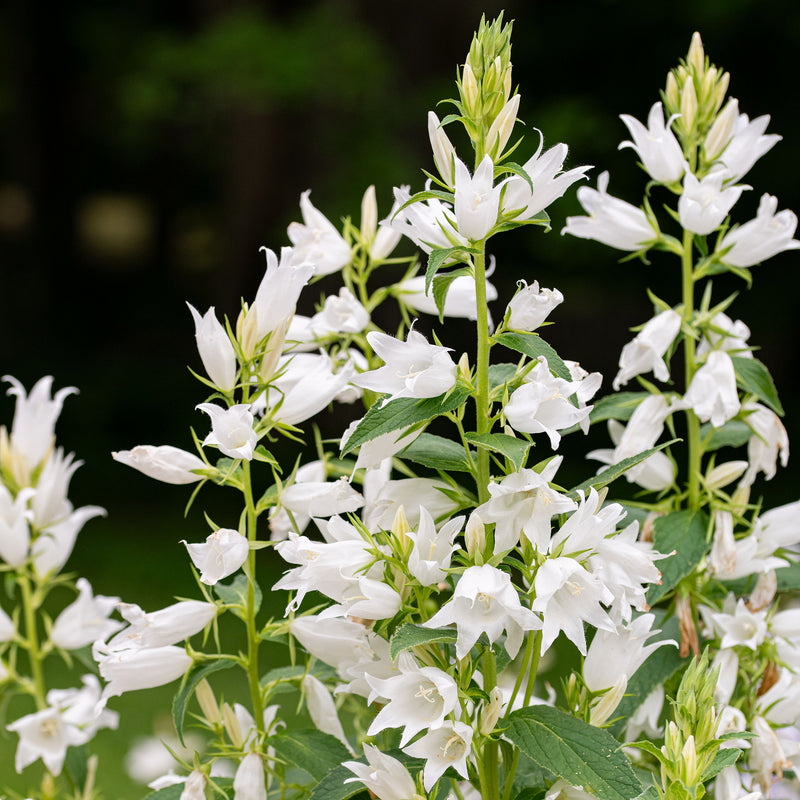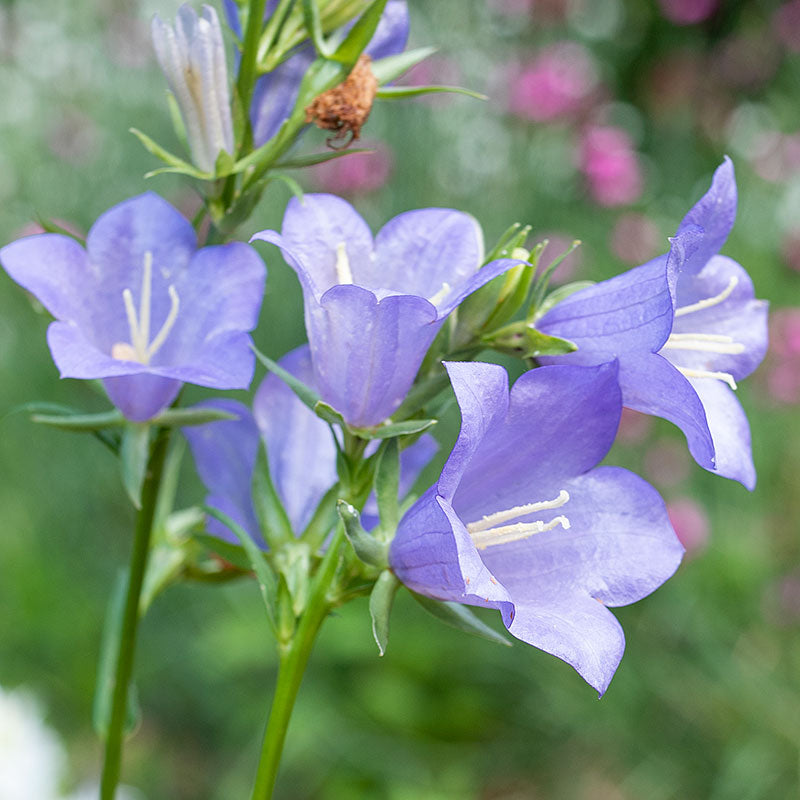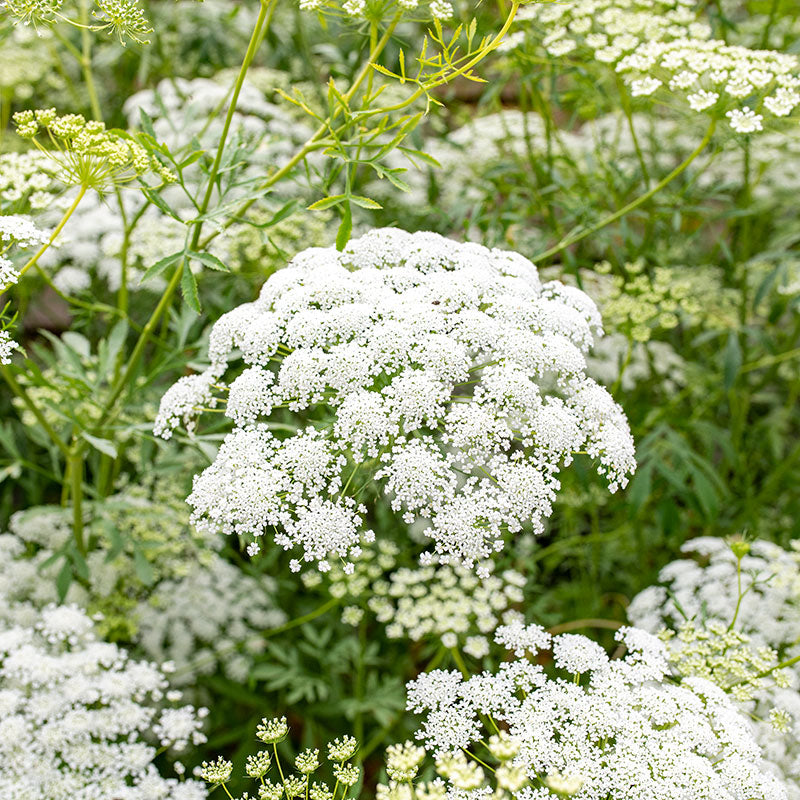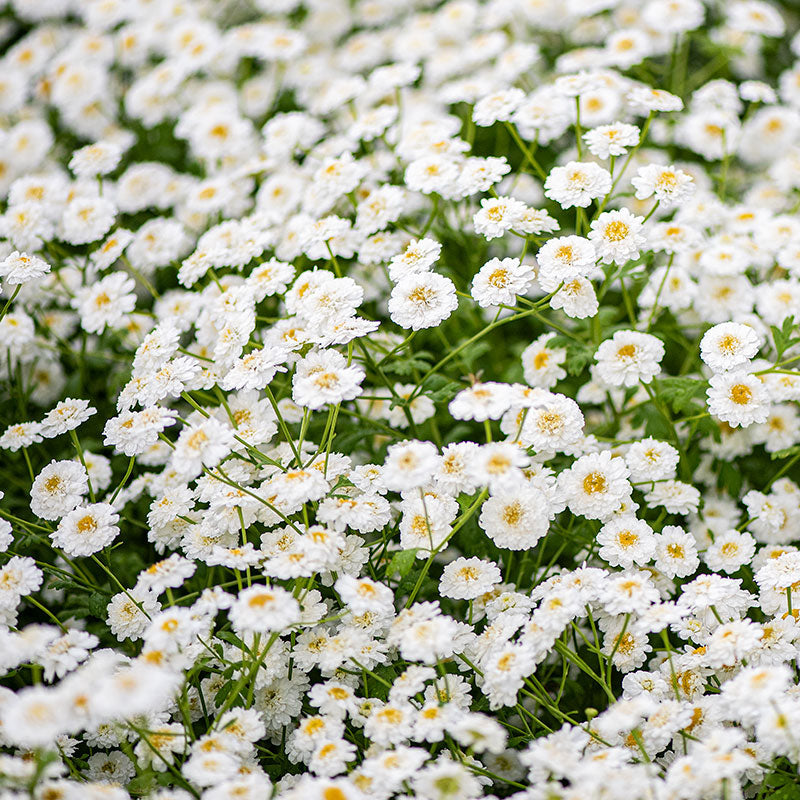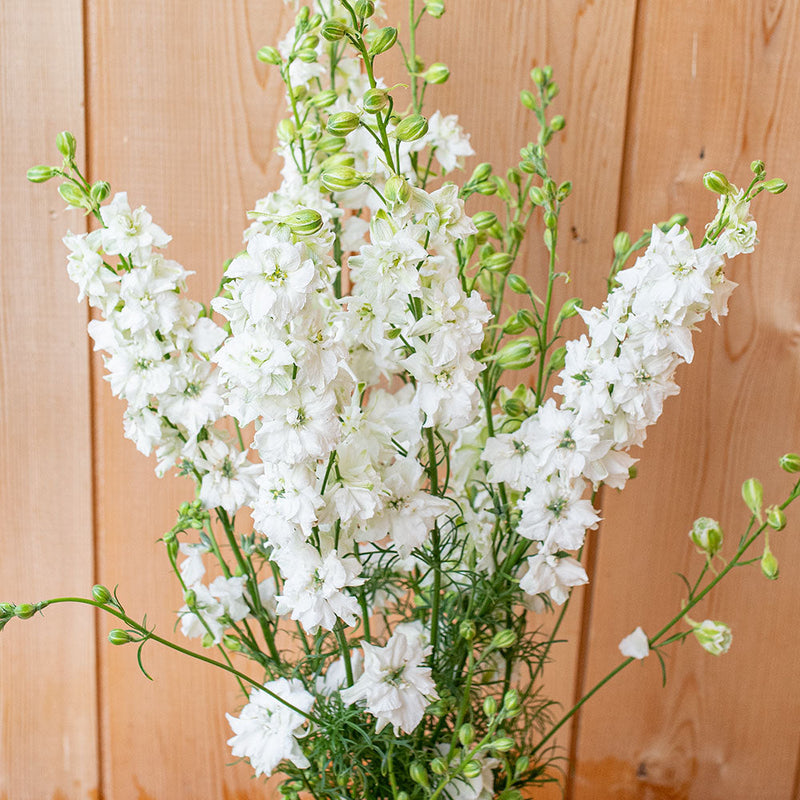Seed Packet
Bellflower - Great 'Alba'
Campanula latifolia var. macrantha alba
Great bellflower is a large, beautiful perennial with a great presence in the flower garden. It is a gallant plant that is adaptable to soil and exposure. Sturdy stems hold a full array of bells, each flower ending in an open star shape, all the better to invite bees to pollinate. It is impactful in the garden, very hardy and long-lived, and a rare and beautiful cut flower.
SKU #S1286
Currently Unavailable
Notify Me When Available
Growing Companions

































